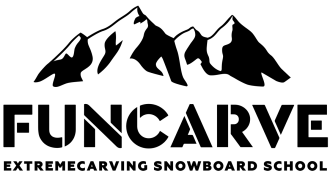Elements. Vertical motion
Vertical motion is the pledge of confidence and control in making carves. By bending and unbending your knees you can change the load of the board and direction of your motion quickly as well as to pass uneven slope and increase your speed in each turn!
Vertical motion is a general term and it mainly describes bending and unbending of legs in the process of running the slope. Depending on preferences and conditions of your snowboarding you should learn down-unweighting or up-unweighting. At the same time a high class snowboarder can combine these techniques while riding down the slope by choosing the most convenient one for a certain area of the slope.
Overall benefits
- The possibility of changing the edge at any moment of the carve. As soon as you unweight the edge the board starts next turn at the radius of carve that you want.
- Stability provided by the motion of the legs which is similar to the principle of work of a vehicle suspension. The speed of reaction of your legs muscles of course depends on the work that your muscles were loaded with. If this load was static then the reaction to changing situation will be slower than it would be in case muscles would contract or stretch in this moment.
- Down-unweighting allows you to have your lowest position when you start the turn. Most carvers feel strong craving for the snow and usage of vertical motion brings them closer to the snow to the maximum at the very beginning of the turn.
- Up-unweighting allows you to have higher speed. By bending your knees in turn you reduce the force of air resistance and feel better stability by keeping your centre of gravity low.
Features of vertical motion
- The whole carve should be divided into two phases: turn and edge changing. If you look at the carve perpendicular to the hill you will see that the first two thirds of the carve are the phase of turn and the last third is the edge changing phase. It is also easy to see that mainly the phase of turn coincides with the phase of acceleration (green arrow on the picture). And edge can be changed at any time depending on the desire of a snowboarder. By choosing the time of edge changing in the carve a snowboarder can control their speed;
- Any kind of unweighting demands smooth vertical motion during the whole phase of turn.If you unbend or bend your legs to the limit ahead of time then the rest part of the carve you will have static legs. Imagine this – having static and stiff legs you run across imperfections on the slope and they throw your weight up and unweight the edge. And you lose the cohesion between your board and the slope. At high speeds fall will be inevitable! But if you bend your legs smoothly during the whole phase of turn then your weight will always press the edge and your knees will amortize slope imperfections and will press the board to the slope after each hummock. Remember: you keep maximum cohesion between the board and the slope until you bend or unbend your knees;
- When changing the edge you have to direct your body slightly forward and to the side of the next turn. When changing the edge using vertical motion try to load your leading foot a little bit more right after edge transferring and in the beginning of turn phase return to basic position 50:50.
Статьи о карвинге на сноуборде




